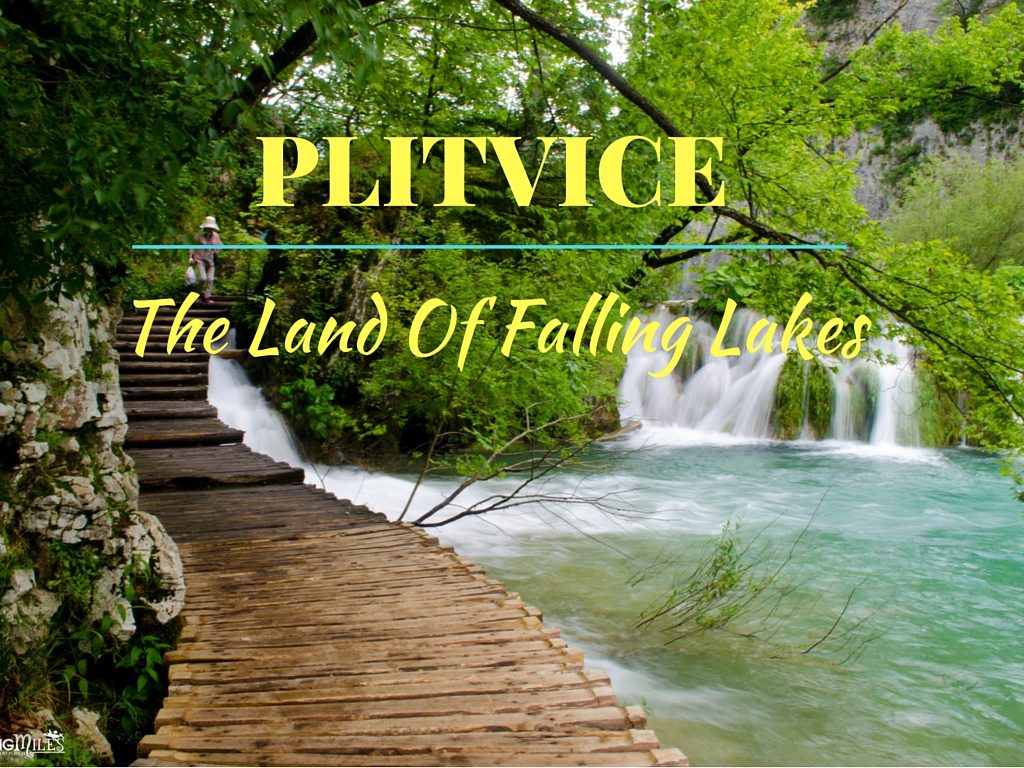
A fine spray of water from Veliki slap caressed my cheeks as I walked towards it. The roar of the Veliki slap or the ‘Big Waterfall’ together with its pearl-like water droplets that splashed on my face, knocked me out and made me pinch myself to realize – I was not hallucinating and I really was in Croatia and I am witnessing the magnificent ‘Plitvice lakes’ for real !! This very thought took some time to sink in, as I surrendered myself to one of the wonders nature has in its cradle.

Veliki Slap or the ‘Big Waterfall’. Slap in Croatian means ‘Waterfall’
Plitvice Lakes National Park or ‘Plitvicka Jezera’ is the largest of all National parks in Croatia with approx 72,851 acres of surface area. Plitvice is pronounced as Plit-vit-sa and Jezera in Croatian means lakes and these lakes are the most gorgeous ones in Croatia and one of the wonderful lakes in the world too!

Spot the path adjacent to the cliff amidst the waterfalls? We walked on it!!
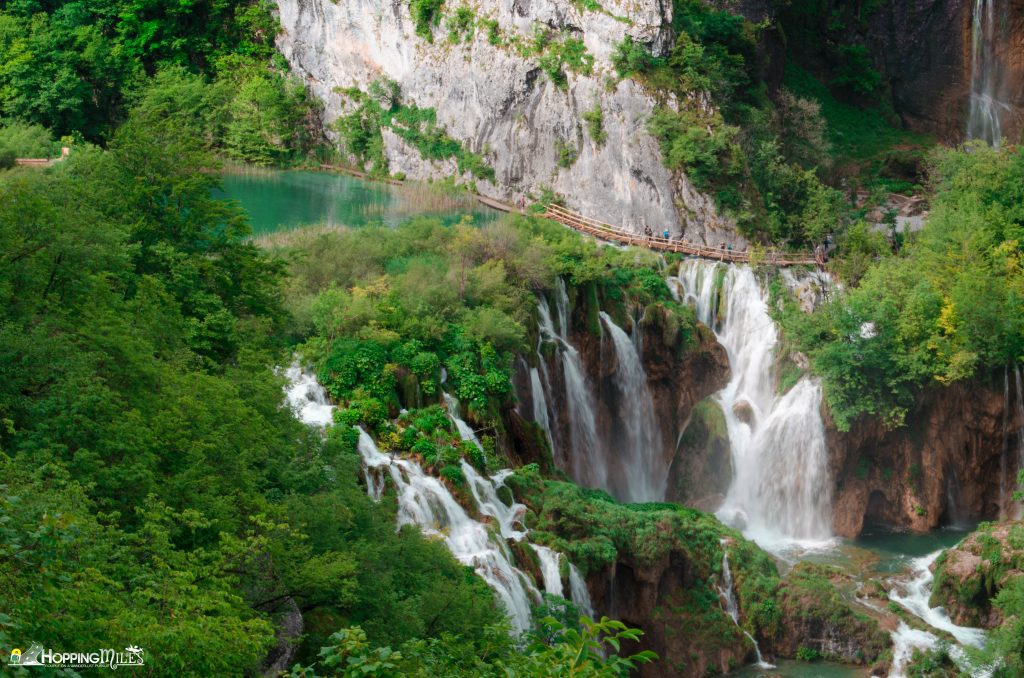
A closer look at the path we traversed next to the cliff, in the middle of waterfalls galore!
16 cascading lakes come together to form a heaven like place – Plitvice, a land of Falling lakes! Plitvice is a brilliant example of how nature can create magic even when things turn nasty. Plitvice Lakes National Park and surrounding area was under threat and was the victim of the Yugoslav Wars in the early 1990s. Plitvice, since then, has recovered well and is slowly turning back to its earlier state. There is a perfect balance of the ecosystem here.
At Plitvice Lakes National Park, the interaction between water, air, rocks and vegetation is dynamic and constantly changing. All these elements merge to create a magical landscape like no other. The lakes are known for their cascades and the ongoing biodynamic process of Tufa or Travertine formation under specific ecological and hydrological conditions.
A Travertine is a porous carbonate rock formed by the sedimentation of calcium carbonate from the water. So, in simple words, during the course of time, while water with limestone content flows down, the calcium carbonate in the water settles down at some places where there is a barrier, thereby making the barrier prominent and stronger than before – This is called a travertine formation. The presence of calcium elements in the water is one of the prime reasons for the lakes to possess those blissful colors.

Lakes with blissful colors !

Ain’t this color just mesmerizing!
This tufa or active Travertine formation in some areas dates back to 6,000 – 7,000 years old which actually means that they were formed after the latest ice age!! Now, that’s something, eh? This travertine formation is prominent in Plitvice Lakes National Park and is a constant process and is happening probably as you stroll through the National Park and you won’t even realize that!
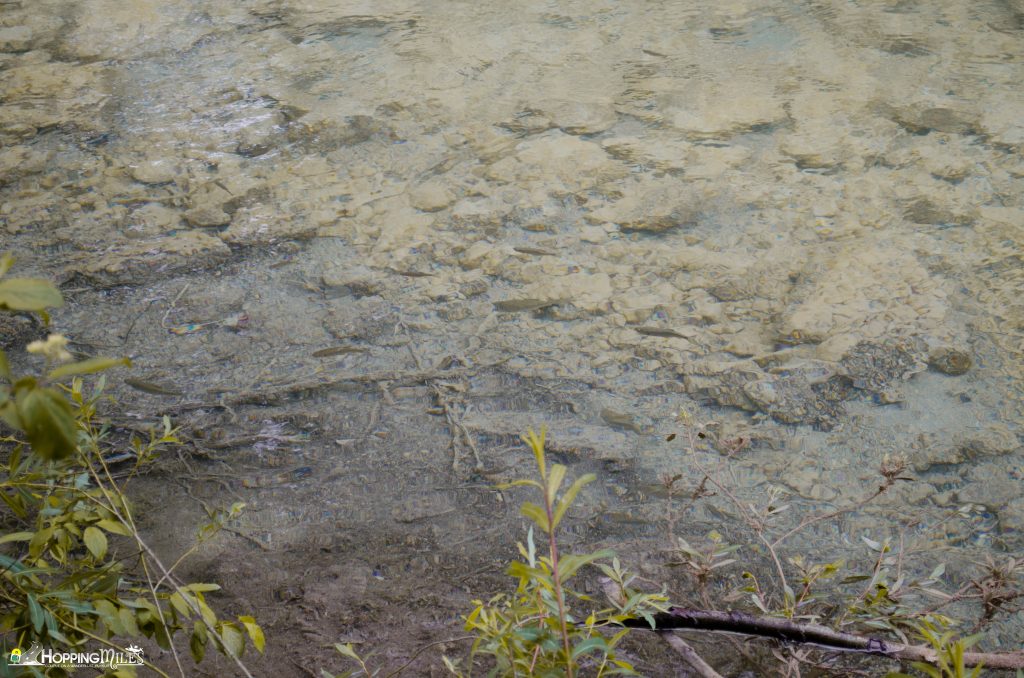
Wondering what this is? This is how clear the water is!! See the bottom right corner to find a water plant emerging from beneath!
Why Plitvice Lakes National Park?
Plitvice Lakes National Park is not just another place to tick off from your bucket list, it is an experience to be cherished. Strolling on the wooden paths with rumbling water beneath your feet, Walking down the path with gushing water on one side and lush green forest on the other, often taking detours to have a look at the pretty waterfalls and to join back the track, to be jealous of those fishes that swim in crystal clear water. Walking across the middle of the lake, passing a series of waterfalls on one side and the tranquil lake on the other and the color of the wooden pathways just creating a perfect contrast for the turquoise lakes, that feeling is second to none!

Wooden paths with rumbling water beneath your feet !

Walking down the path with gushing water on one side and lush green forest on the other

Taking detours to have a look at the pretty waterfalls and to join back the track
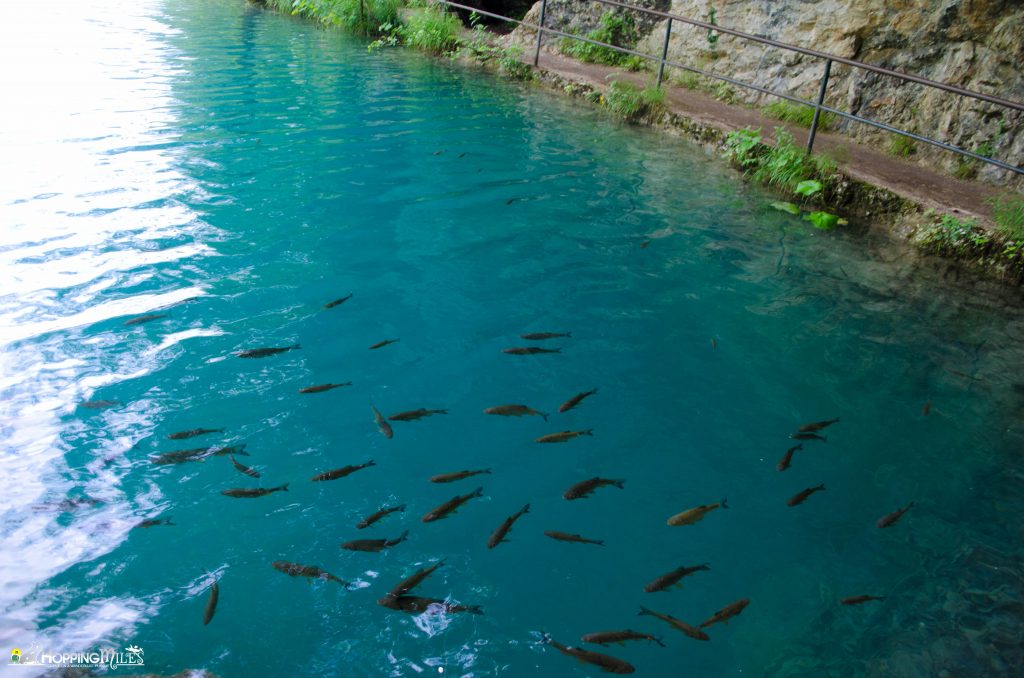
Definitely jealous of those fishes that swim in crystal clear water !!

To be able to see the fins and scales of these pretty little things in naked eye, possible only at Plitvice!!
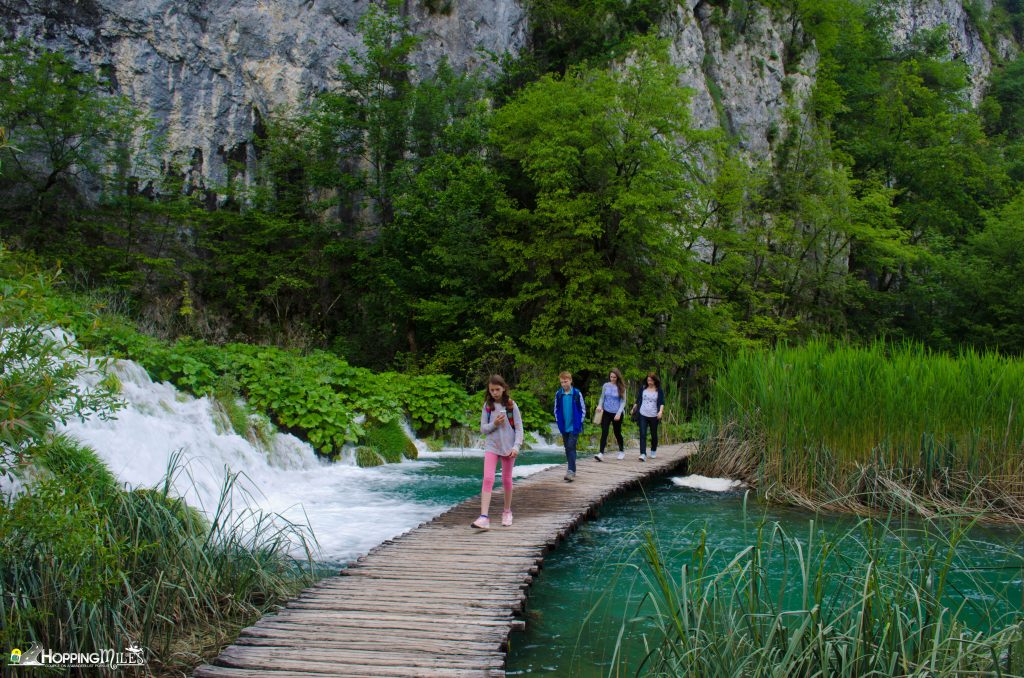
Walking across the middle of the lake, passing a series of waterfalls on one side and the tranquil lake on the other

An aerial view of this path

A closer look! I was so wanting to walk on this trail !
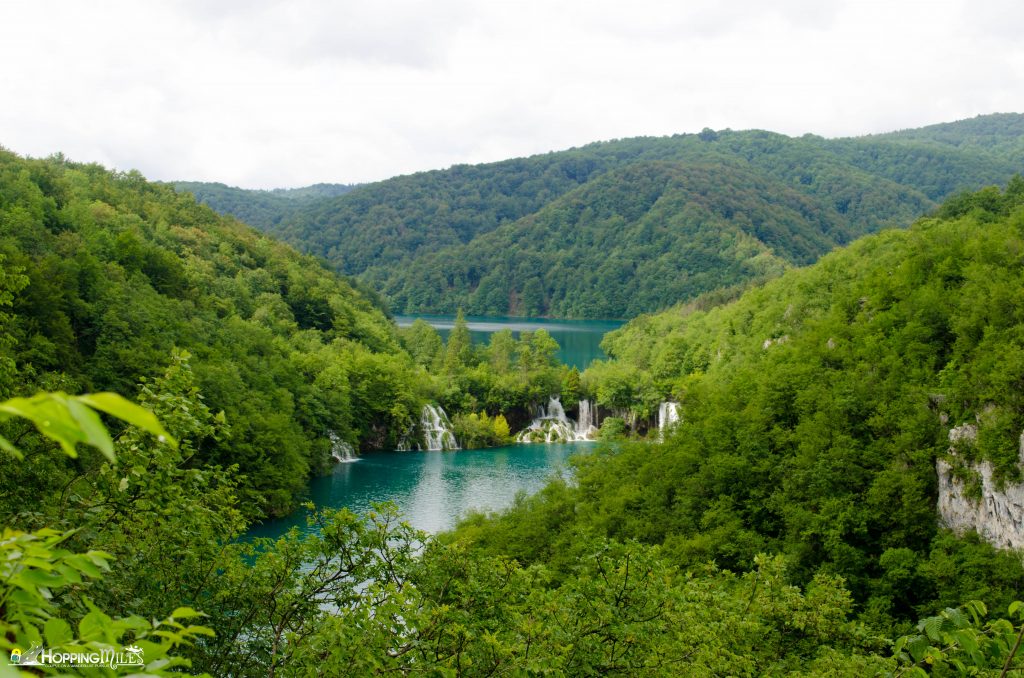
The rolling hills of Plitvice Lakes National Park
Plitvice Lakes National Park is exhilarating not only because of its sheer beauty but also for its imperative location. Plitvice Lakes is strategically located between the capital city of Zagreb and the pleasing city, Zadar. The drive to Plitvice Lakes National Park is something to look out for. Keep your eyes glued outside the window for some charming views. I especially loved the drive from Zadar towards Plitvice Lakes than the drive from Plitvice to Zagreb, though it is lovely in its own way!
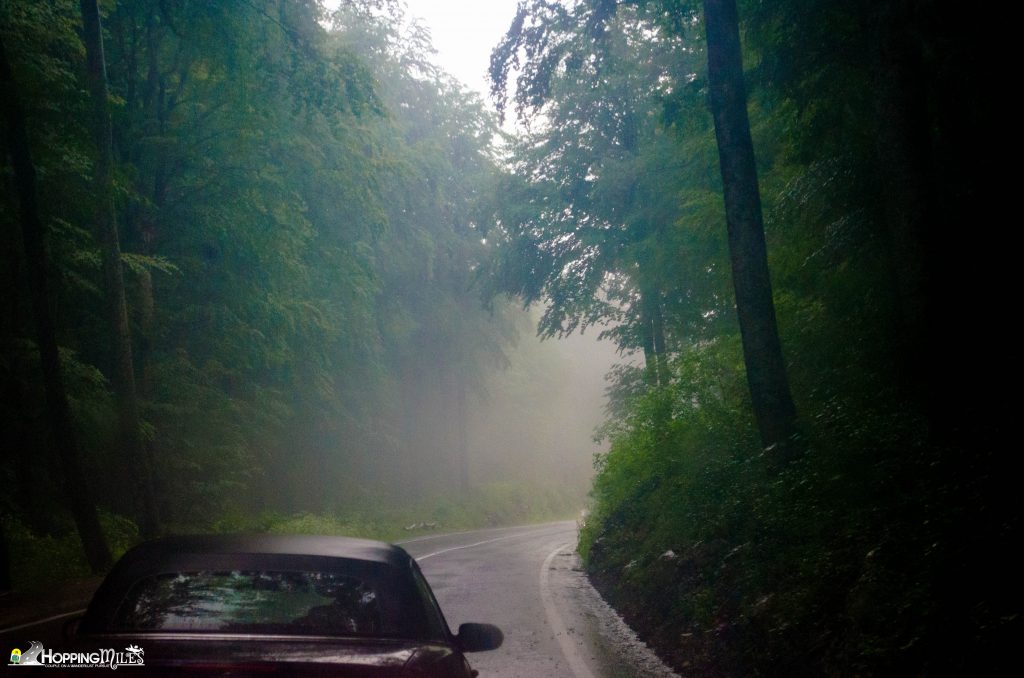
The drive en route to Plitvice. Thick vegetation coupled with large plain lands with tiny flowers of lovely colors sprinkled all over!
Plitvice Lakes are overwhelming. There is a new thing in every turn. There are waterfalls in every corner. There is shimmering water, plush vegetation, opulent wildlife, the unpolluted refreshing air, the mossy foliage, verdant rolling hills, those surreal waterfalls and what not! These views can leave anyone dumbfound in front of the portrait painted by Mother Nature. It wouldn’t be an exaggeration if I say, Plitvice Lakes National Park is one such place worth seeing in one’s lifetime!
In the next post, I shall reveal how to best explore this massive 72,851 acres of UNESCO Heritage site. What to do and what not to do at Plitvice Lakes National Park so that you can get best of your visit and get drenched in the spell that water casts on you!
Click here to get your Perfect Guide to explore Plitvice Lakes National Park!
If you have liked this post, show us some love and pat us on our backs! Like us on Facebook, follow us on Twitter and Instagram and subscribe to our Youtube channel!

This is definitely a slice of paradise on earth! Your captures are breath taking, we are wondering how beautiful it must to see in real! 🙂
Trust me! It was absolutely surreal <3